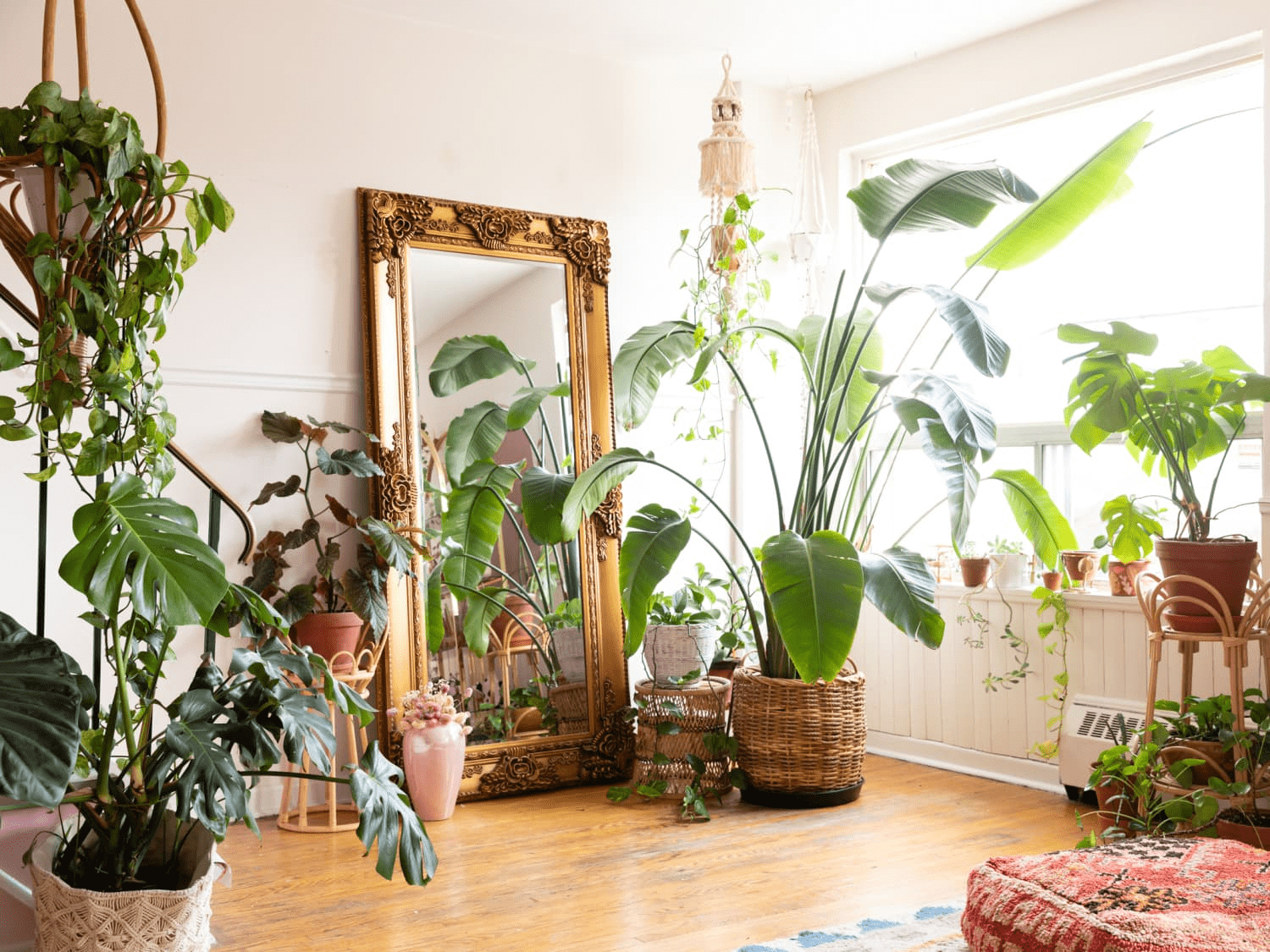In today’s fast-paced world, creating a serene and inviting indoor environment has become essential for maintaining a sense of well-being. Indoor plants not only add a touch of greenery to our living spaces but also contribute to improved air quality and overall ambience. In this blog, we’ll explore the beauty of indoor plants and provide maintenance and styling tips to help you create your own in-house garden oasis.
The Charm of Indoor Plants:
Natural Ambiance:
Indoor plants bring a sense of nature indoors, creating a tranquil and inviting atmosphere in any space. Whether it’s a lush fern in the corner or a cascading ivy on a shelf, indoor plants instantly breathe life into your home décor.
Air Purification:
Certain indoor plants are known for their air-purifying properties, helping to remove toxins and improve air quality. Plants such as spider plants, peace lilies, and snake plants are renowned for their ability to absorb harmful pollutants like formaldehyde, benzene, and carbon monoxide, making them invaluable additions to your indoor environment.
Stress Reduction:
The presence of greenery has a calming effect on the mind, helping to lower blood pressure and anxiety levels. Incorporating indoor plants into your home or office environment can create a more relaxed and peaceful atmosphere conducive to productivity and overall happiness.
Choosing the Right Indoor Plants:
Consider Lighting Conditions:
Before selecting indoor plants, assess the lighting conditions in your space. Some plants thrive in bright, indirect light, while others prefer low-light environments. Place sun-loving plants like succulents and cacti near south-facing windows, while shade-tolerant plants like pothos and philodendrons can thrive in dimly lit corners.
Evaluate Maintenance Requirements:
Different indoor plants have varying maintenance needs, including watering frequency, humidity levels, and temperature requirements. Choose plants that align with your lifestyle and maintenance capabilities. If you have a busy schedule, opt for low-maintenance plants like ZZ plants or snake plants that require minimal attention.
Research Toxicity Levels:
If you have pets or small children, it’s essential to research the toxicity levels of indoor plants to ensure they are safe to have in your home. Some common houseplants like peace lilies, philodendrons, and aloe vera can be toxic to pets if ingested. Be sure to choose non-toxic varieties or place toxic plants out of reach of curious pets and children.
Styling Your Indoor Garden:
Choose Complementary Planters:
Select planters that complement your interior decor style and the aesthetic of your indoor plants. Consider using a mix of materials such as ceramic, terracotta, or woven baskets for added visual interest. Get creative with planters in different shapes, sizes, and textures to add personality to your indoor garden.
Create Visual Interest with Height:
Incorporate a variety of plant heights to create visual interest and depth in your indoor garden. Use tall plants as focal points and layer shorter plants in front to create a dynamic display. Arrange plants on shelves, plant stands, or hanging macramé planters to maximise vertical space and add dimension to your indoor oasis.
Experiment with Groupings:
Arrange indoor plants in groupings of varying sizes to create a cohesive and visually appealing display. Grouping plants together can also help create microclimates that mimic their natural habitat. Mix and match different plant varieties with contrasting foliage colours, textures, and shapes to create eye-catching arrangements that showcase the beauty of nature indoors.
Maintenance Tips for Indoor Plants:
Watering:
Establish a regular watering schedule based on the moisture needs of your indoor plants. Avoid overwatering by allowing the soil to dry out slightly between waterings, and ensure adequate drainage to prevent root rot. Use a moisture meter or simply stick your finger into the soil to gauge when your plants need water.
Pruning and Trimming:
Regularly prune and trim your indoor plants to promote healthy growth and maintain their shape. Remove dead or yellowing leaves, and trim back overgrown branches to encourage new growth. Pruning also helps improve air circulation and prevents pest infestations in your indoor garden.
Monitoring Humidity Levels:
Indoor plants thrive in environments with adequate humidity levels. Consider using a humidifier or placing a shallow tray filled with water and pebbles near your plants to increase humidity. Misting your plants with water regularly can also help create a humid microclimate, especially during dry winter months when indoor air tends to be drier.
Conclusion: Cultivating Tranquility with Indoor Plants
Indoor plants have the power to transform our living spaces into tranquil sanctuaries, providing numerous benefits for our physical and mental well-being. By selecting the right indoor plants, styling them thoughtfully, and implementing proper maintenance techniques, you can create a thriving in-house garden oasis that brings joy and serenity to your home. Explore the beauty of indoor plants and embark on a journey of cultivating tranquillity in your living space with the help of Nursery Melbourne.

As the editor of the blog, She curate insightful content that sparks curiosity and fosters learning. With a passion for storytelling and a keen eye for detail, she strive to bring diverse perspectives and engaging narratives to readers, ensuring every piece informs, inspires, and enriches.










